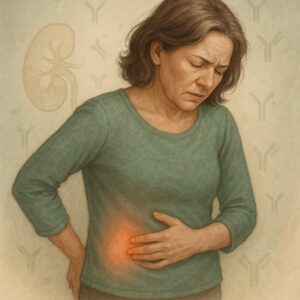Membranous nephropathy is a chronic autoimmune kidney disease that causes damage to the glomeruli, the tiny blood vessels in the kidneys that filter waste and excess fluid. This damage leads to protein leaking into the urine (proteinuria), a condition known as nephrotic syndrome.
The disease can be primary (caused by the immune system attacking the kidney directly) or secondary (triggered by infections, cancer, medications, or other autoimmune conditions).

